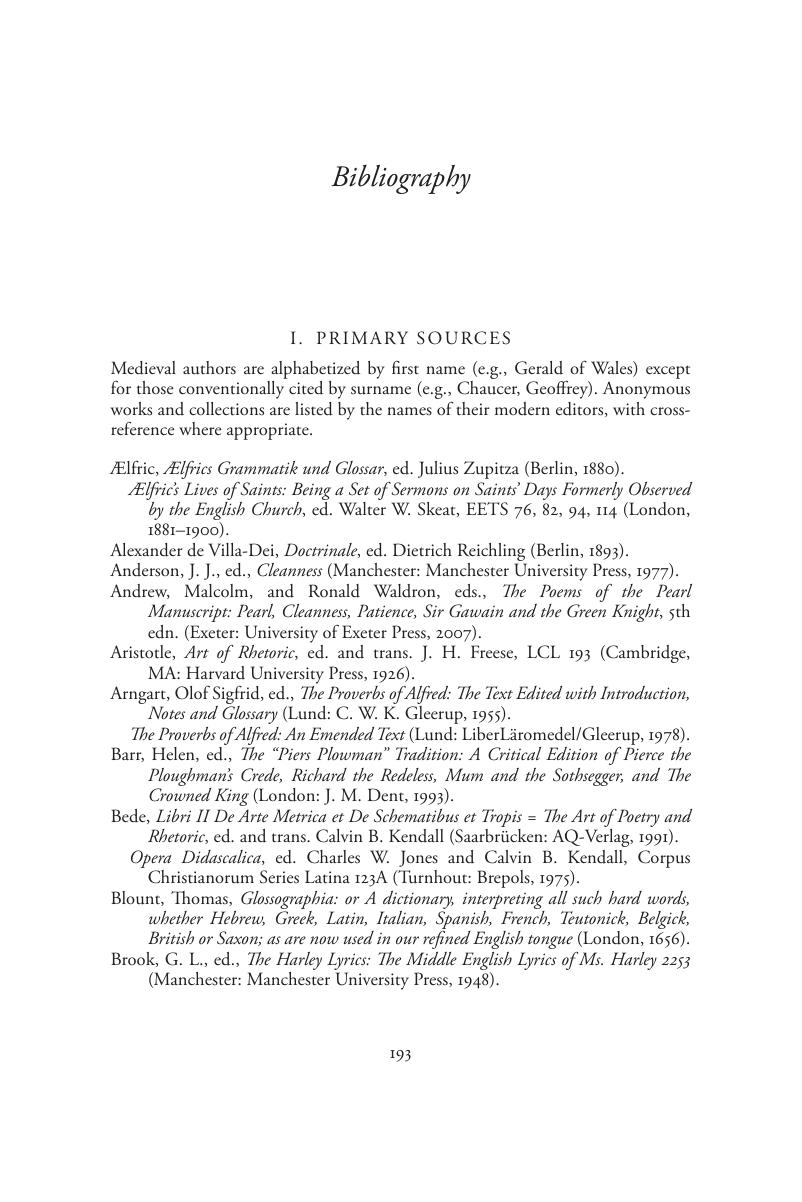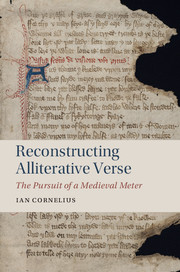Book contents
- Reconstructing Alliterative Verse
- Cambridge Studies in Medieval Literature
- Reconstructing Alliterative Verse
- Copyright page
- Contents
- Tables
- Acknowledgments
- Notes on the Text
- Abbreviations
- Introduction: What Was Alliterative Poetry?
- Chapter 1 An Unwritten Medieval Treatise
- Chapter 2 The Accentual Paradigm in Early English Metrics
- Chapter 3 The Origins of the Alliterative Revival
- Chapter 4 The Fourteenth-Century Meter
- Chapter 5 The End of Alliterative Verse
- Epilogue: Edmund Spenser’s Poetry Lesson
- Notes
- Bibliography
- Index
- Cambridge Studies in Medieval Literature
- References
Bibliography
Published online by Cambridge University Press: 27 July 2017
- Reconstructing Alliterative Verse
- Cambridge Studies in Medieval Literature
- Reconstructing Alliterative Verse
- Copyright page
- Contents
- Tables
- Acknowledgments
- Notes on the Text
- Abbreviations
- Introduction: What Was Alliterative Poetry?
- Chapter 1 An Unwritten Medieval Treatise
- Chapter 2 The Accentual Paradigm in Early English Metrics
- Chapter 3 The Origins of the Alliterative Revival
- Chapter 4 The Fourteenth-Century Meter
- Chapter 5 The End of Alliterative Verse
- Epilogue: Edmund Spenser’s Poetry Lesson
- Notes
- Bibliography
- Index
- Cambridge Studies in Medieval Literature
- References
Summary

- Type
- Chapter
- Information
- Reconstructing Alliterative VerseThe Pursuit of a Medieval Meter, pp. 193 - 212Publisher: Cambridge University PressPrint publication year: 2017



